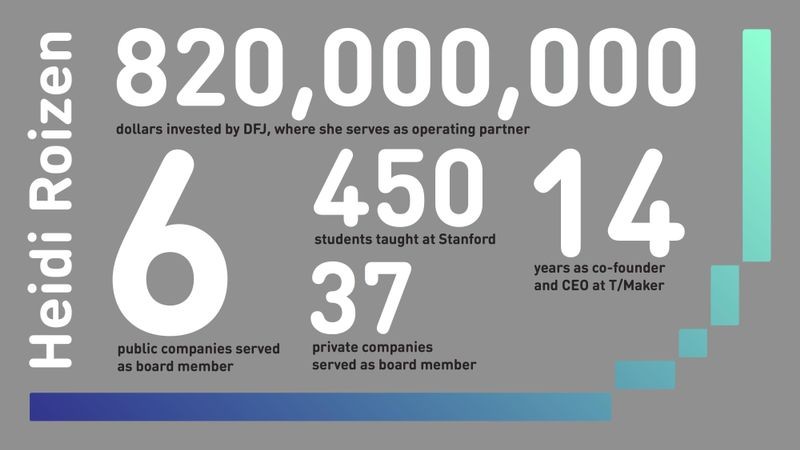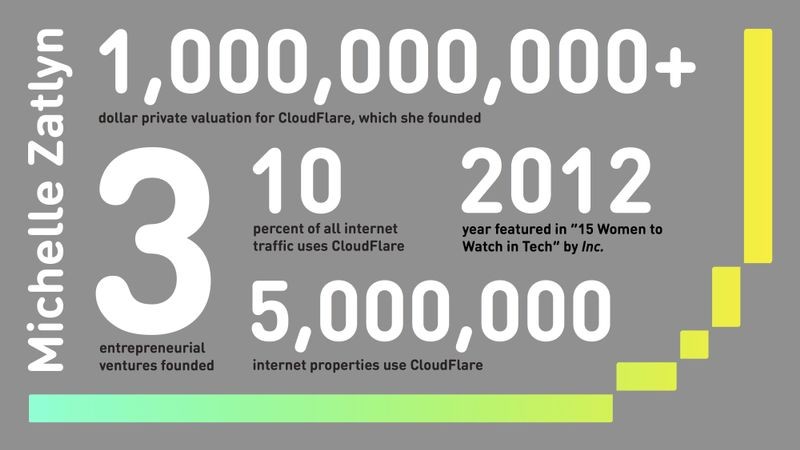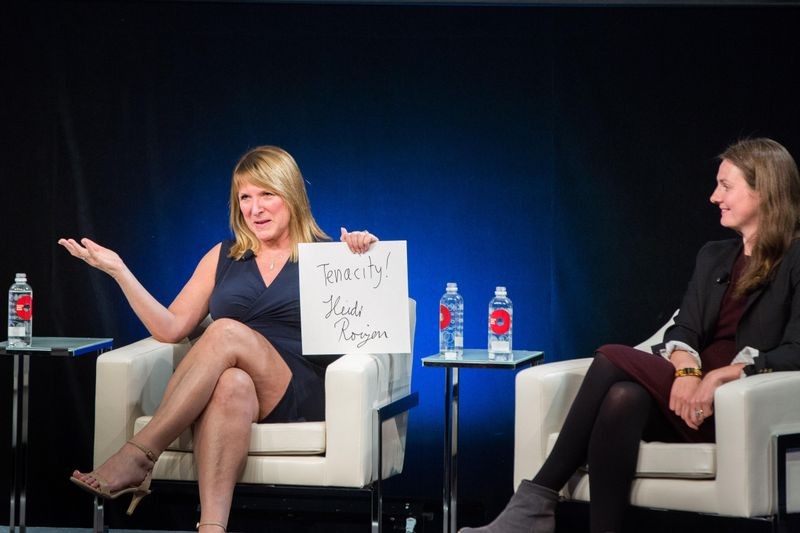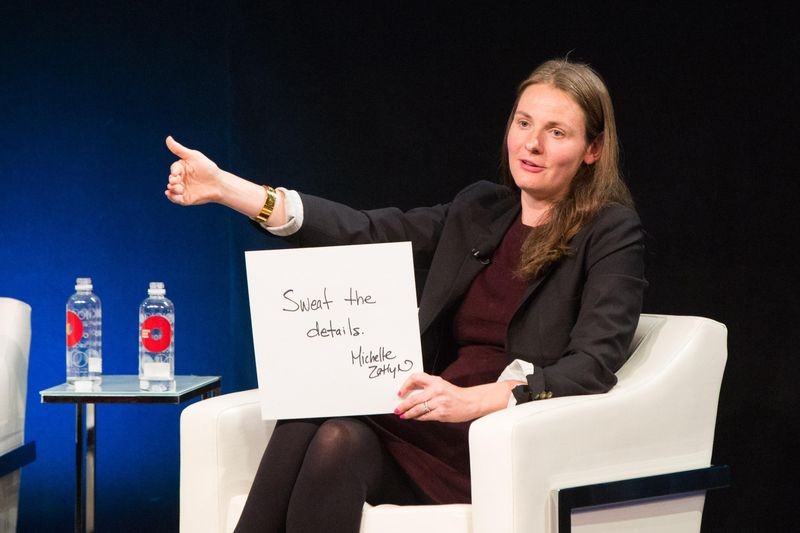

CHM Live’s “Pioneers of the Possible: DFJ’s Heidi Roizen and CloudFlare’s Michelle Zatlyn in Conversation with Exponential’s Marguerite Gong Hancock,” September 22, 2016. Produced by the Exponential Center at the Computer History Museum.
Silicon Valley is home to pioneers of the possible. From Bill Hewlett and David Packard to Mark Zuckerberg, history, media, and pop culture frequently showcase the stories of Silicon Valley’s male founders. What about women?
While tech companies and venture capitalists today are actively starting to support rising female stars, women entrepreneurs often are unheralded. During the past two years, female founders raising Series A capital jumped from 10 percent to 14 percent in 2015, but they are still too rare.
What can we learn from two successful entrepreneurs who have forged their own paths for innovation and impact? Make no mistake: these entrepreneurs are noteworthy for their success and impact by any measure. They are also both women.
To kick-off the Exponential Center’s new Founders event series, on September 22, 2016, Heidi Roizen and Michelle Zatlyn sat down with me in conversation on the CHM stage. Joining us were enthusiastic audience members at the museum as well as through live broadcast on C-SPAN. They shared their stories on a wide range of topics, including different ways to think about becoming a founder, aha moments from the earliest days of their startups, highs and lows as an entrepreneur, and best advice.
First, let me introduce Heidi and Michelle.

Introducing DFJ operating partner Heidi Roizen
Heidi Roizen is a venture capitalist, Stanford lecturer, and “recovering entrepreneur.” In 1983, she co-founded software company T/Maker and served as CEO for over a dozen years until its acquisition. After a year as VP of Worldwide Developer Relations at Apple, she became a venture capitalist and is now the operating partner at DFJ. She serves on the the board of directors for DMGT, ICIX, Intematix, ShareThis, and Zoox and lectures at Stanford on entrepreneurship.

Introducing CloudFlare co-founder Michelle Zatlyn
Michelle Zatlyn is co-founder and head of user experience for CloudFlare, a web performance and security company selected by the Wall Street Journal as the “Most Innovative Internet Technology Company” for two successive years and member of the unicorn club, with a private valuation of more than $1 billion. Zatlyn has been named a Young Global Leader by the World Economic Forum and included in the San Francisco Business Times’ ”40 Under 40” list of leaders.
What are questions to ask yourself before becoming a founder? Michelle: “There are a lot of people who start companies just because they want to be a founder. I think that is the worst reason to start a company. Being employee 500 at Facebook would have been a wonderful choice. Look at where it’s gone. They needed really smart, entrepreneurial people to make that happen. Being a founder of a company that nobody uses really sucks . . . You either have big egos that can’t execute or people who are working on things that don’t matter. You need to ask yourselves two questions. Are you solving a meaningful problem? Can you assemble the right people to execute? You need both the big idea and the right people.”
Heidi: “Most of the great entrepreneurs I’ve ever had the pleasure to work with are people that recognize a problem and go out and solve it... I work for a firm [DJF] whose motto is ‘Think Big.’... But “venture is not for everyone. The vast majority of companies should not be venture backed because they’re not intending to have multi-hundred dollar outcomes and be IPO’d. There are tremendously fantastic numbers of companies solving what some people say are small problems. It might be a niche problem... I don’t think just because your idea isn’t the biggest idea in the universe makes it a bad idea... Are you passionate about it? Is it worthy of your time?”
Heidi shared how a conversation opened her eyes to seeing herself in a new role for T/Maker, an early personal computer software company. In 1983 she became CEO, one of a few women CEOs in Silicon Valley, a role she held for 14 years.
Insert caption here..
Michelle discussed how what seemed like a small decision in CloudFlare’s earliest days led to unintended big problems. This difficult experience led to key insights into “smart things to do upfront”—even during early bootstrapping—with future growth in mind.
Michelle shared the euphoria of being a newcomer and a co-founder of an unknown company in the Valley and recruiting their first employee—“somebody we didn’t know” “who believed in the vision”. Low point? She recalled the lessons learned and how her team survived—and improved—after the dark night when the company and all its customers went offline for 45 minutes.
Heidi remembered the highs of shipping products and seeing them on the store shelves in Paris or Hong Kong. She savored hearing from grateful customers (like the farmer who sent a box of avocados as a thank you) and “feeling like we had made people’s lives better.” Lows? “Running out of money” and “when things weren’t working among people” on our team.
Heidi: Recalling 6 years of unsuccessful pitches for venture funding and other challenges along the path to success, Heidi called out: “Tenacity. The thing I love about this word is that anyone can develop this. You have to learn to keep getting back up again and getting back up again…”

Heidi Roizen: Tenacity
Michelle: Citing the personal attention to customer service that extends from CloudFlare’s early days of just 100 customers to its current register of 12,000 new customers a day, Michelle summed up: “Sweat the details. It’s actually what I love most about my job. You want to be there in the details. It matters.”

Michelle Zatlyn: Sweat the details
Speaking about their experiences in the world of entrepreneurship in Silicon Valley, Michelle applauded “the beauty of the Valley” as “definitely the best place” to start a company—even as a newcomer “who doesn’t know anybody.” Heidi celebrated the opportunity of being where people have a unique understanding of “what is coming down the line” and on the edge of what’s next. She summed up: Silicon Valley exemplifies the adage, “The future is here. It is just unevenly distributed.”
CHM Live’s “Pioneers of the Possible: DFJ’s Heidi Roizen and CloudFlare’s Michelle Zatlyn in Conversation withe Exponential’s Marguerite Gong Hancock,” September 22, 2016.
Produced by the Exponential Center at the Computer History Museum. [/youtube]